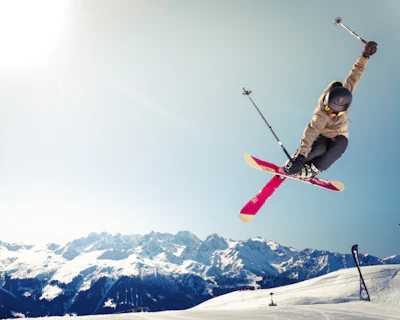
Anterior cruciate ligament injuries in elite ski jumping reliably allow return to competition but severely affect future top performance
16/02/2024
Oronowicz J, Seil R, Hörterer H, Moksnes H, Ekas GR, Cabri J, Mouton C, Frenzel G, Tischer T. Anterior cruciate ligament injuries in elite ski jumping reliably allow return to competition but severely affect future top performance. Knee Surg Sports Traumatol Arthrosc. 2024 Feb 16. doi: 10.1002/ksa.12076. Epub ahead of print. PMID: 38363010.
Abstract
Purpose: In recent years, anterior cruciate ligament (ACL) injuries have been frequently observed in ski jumping. However, available data in this discipline are very scarce. Therefore, the purpose of this study was to investigate whether an ACL injury in elite-level ski jumping limits the performance level after ACL reconstruction (ACLR).
Methods: Both male and female elite-level ski jumpers from five national A-teams who suffered an ACL injury were identified retrospectively by searching available media reports and Fédération Internationale de Ski (FIS) database. World Cup (WC) results and time-out-of-competition before ACL injury and after ACLR were compared. Only athletes who suffered the injury during or after the 2009-2010 season and who participated in at least one WC competition before the injury were included in this study. The level of athletes' performance from two full seasons before until three seasons after the injury was compared.
Results: Eighteen elite-level ski jumpers (11 males/seven females) were eligible for the study. All male and four female athletes returned to professional competition after ACLR. One female athlete ended her career due to prolonged recovery and two have not yet recovered due to a recent injury. The mean return-to-competition (RTC) time was 14.6 months in males and 13.5 months in females. The mean WC placement decreased after the ACL injury: two seasons before injury the mean position was 17.9 ± 11.0 (n = 12), one season before it was 22.4 ± 12.8 (n = 15). After recovery, the mean placement in seasons 1-3 was: 26.4 ± 8.9 (n = 7), 25.7 ± 10.3 (n = 13), 33.6 ± 12.2 (n = 10) (p = 0.008). Among the athletes returning to competition, only six males and three females reached their preinjury level and only one male and one female (compared to seven males and three females preinjury) reached an individual top-3 placement after ACLR, accounting for less than 10% of podiums compared to preinjury.
Conclusion: Only 60% of the professional ski jumpers reached the preinjury level and less than 15% reached a top-3 placement after the ACL injury. These results support the fact that ACL tear during a ski jumping career may be a significant factor limiting high-level performance. In terms of clinical relevance, the findings implicate the need to analyse the reasons of these very low rates of return to elite-level performance, to analyse ACL injury and RTC rates at lower levels of performance and to develop specific prevention strategies in order to reduce the number of ACL injuries in this sport.
